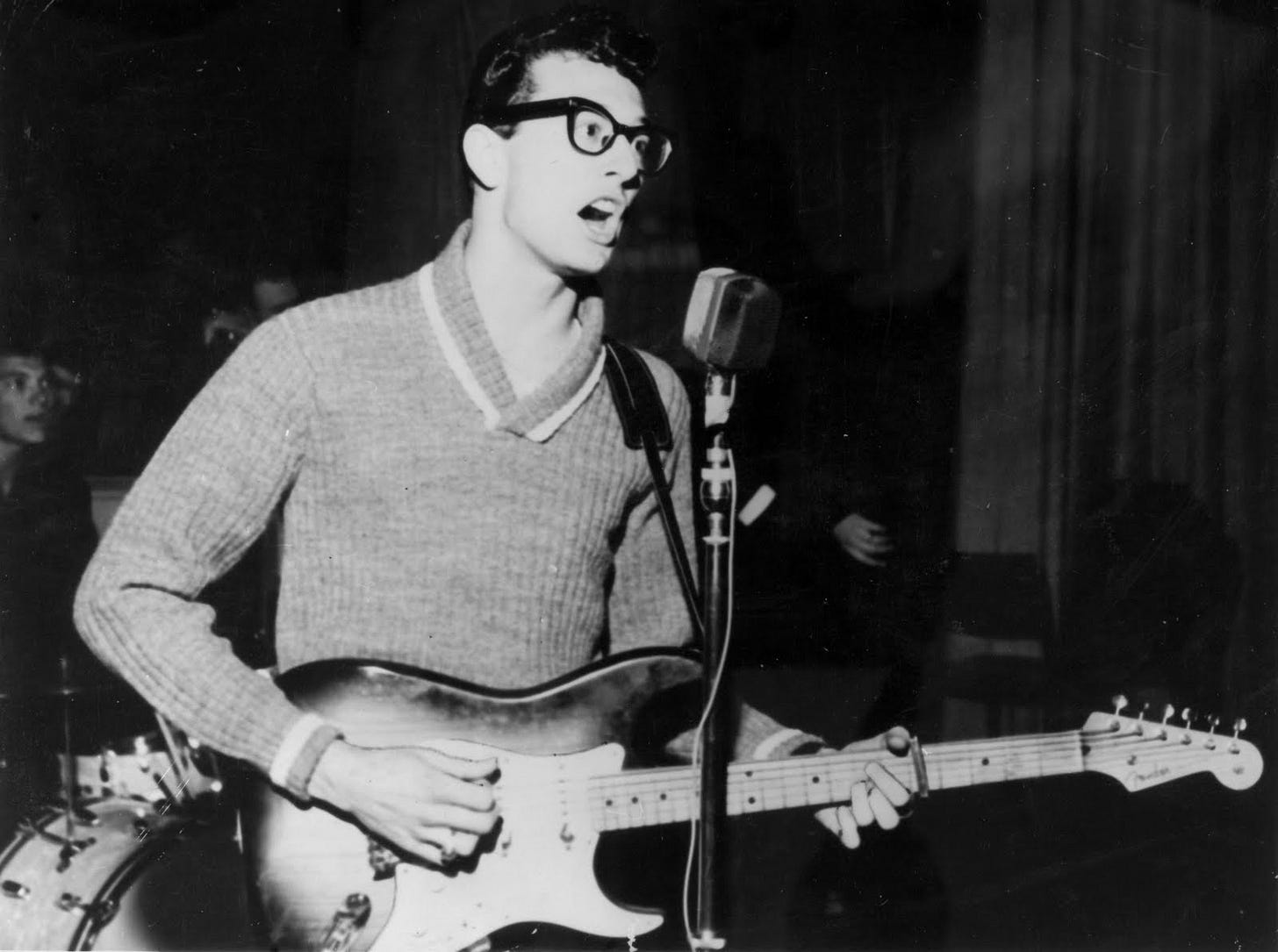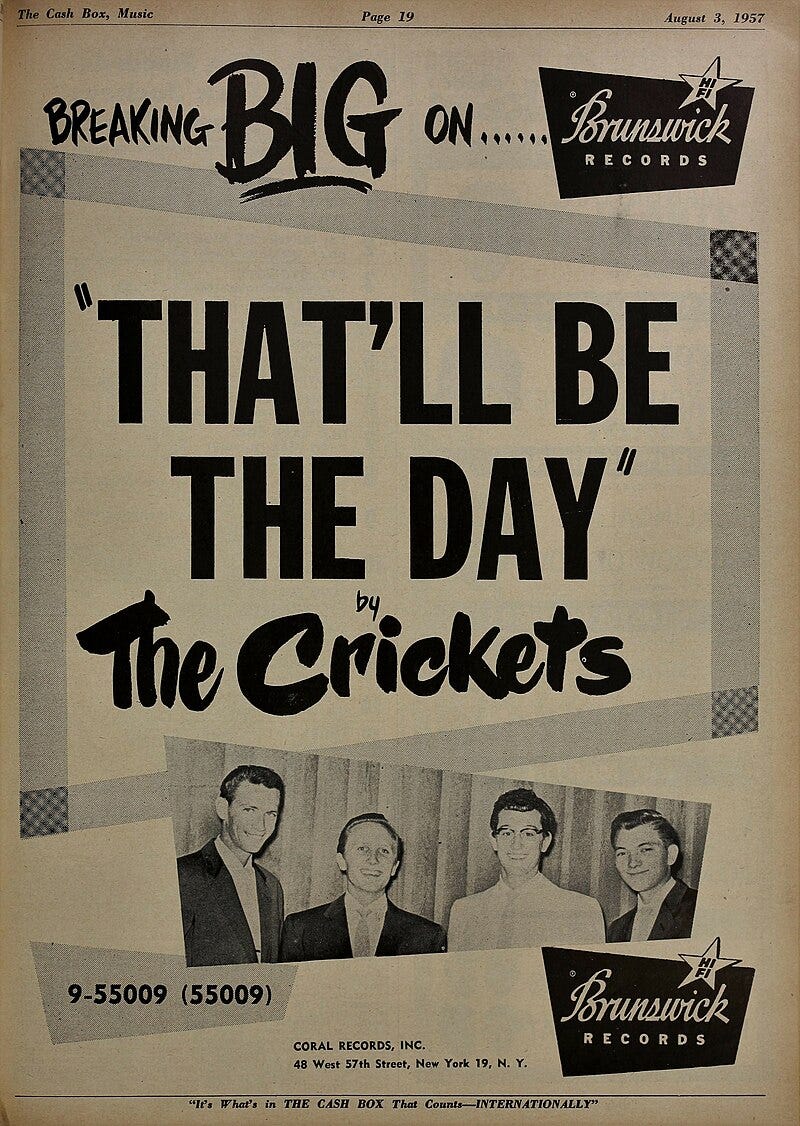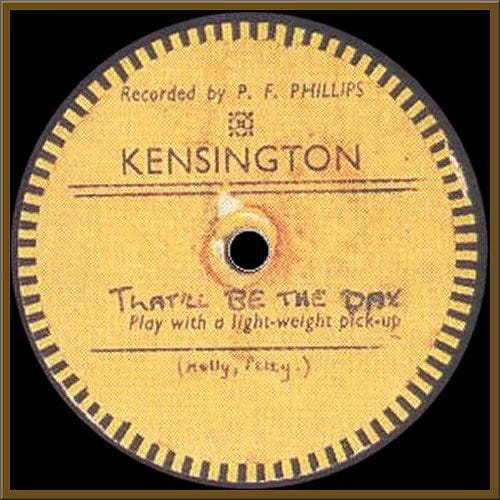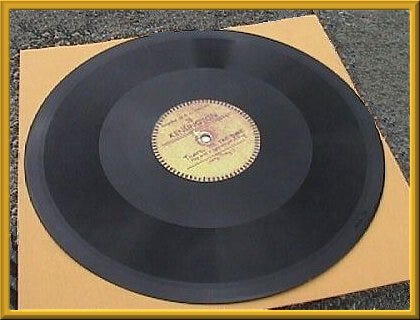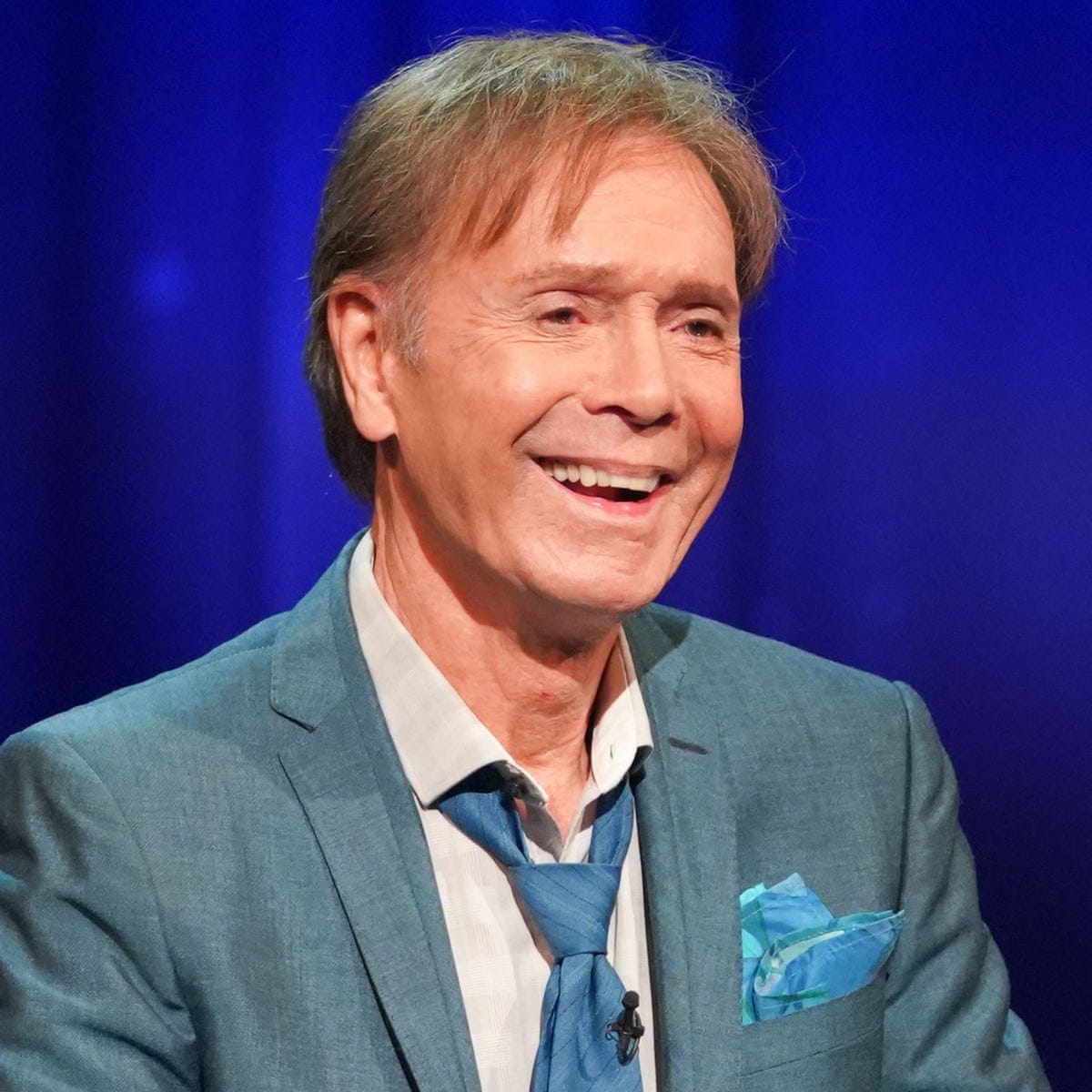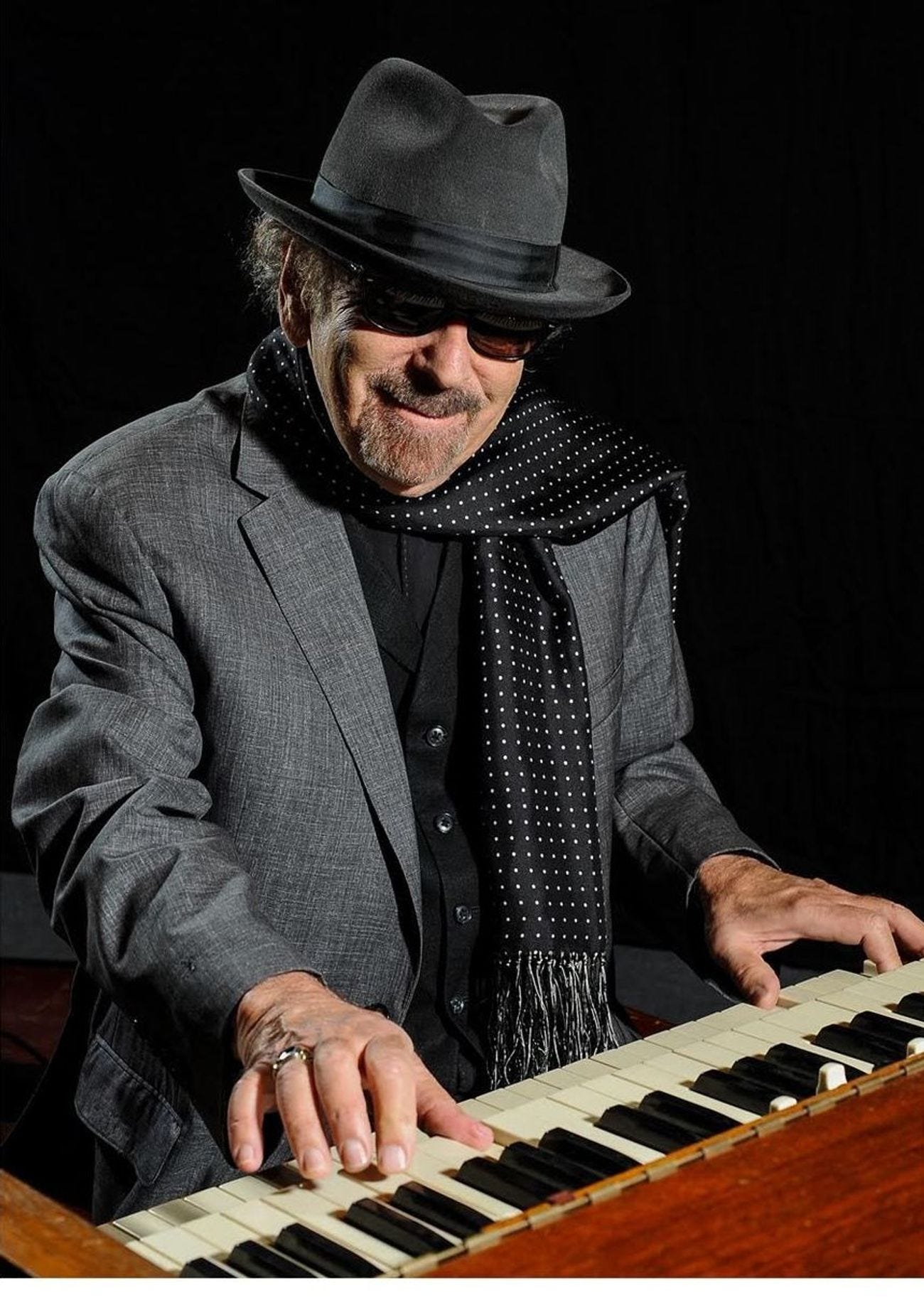Inside Tracks #24: Buddy Holly's "That'll Be The Day" Turns 66: Covers by Quarrymen, The Crickets, Foghat, Rodney Crowell & More
13 versions out of the 116 extant! We line 'em up chronologically, starting with 1957 Holly, and end with The Crickets in 2004, with rock, country, blues, and power pop checkin' in!
Charles Hardin Holley was born September 7, 1936 in Lubbock, TX, and died at 22 in February 3, 1959, in the “day the music died” plane crash that also tragically took the lives of J.P. “The Big Bopper” Richardson, Richie Valens, and the pilot, Roger Peterson.
Called “Buddy” as a child, Decca Records signed Holley and band (soon to be called The Two Tones, then The Three Tunes) in February 1956. In the contract, Decca misspelled Buddy’s surname as “Holly.” From then on he was known as “Buddy Holly.”
Holly was unhappy with the results of his short time with Decca; inspired by the success of previous productions by Norman Petty, together with drummer, Jerry Allison, bassist Joe B. Mauldin, and rhythm guitarist Niki Sullivan, he went to Petty’s studio in Clovis, New Mexico.
That led to the group (known as Buddy Holly and the Three Tunes, with Sonny Curtis, Don Guess, and Jerry Allison) recording a demo in Nashville of “That'll Be the Day” (the one occupying #1 on our Playlist), produced by Owen Bradley. It was released in August 1957, but only after Holly’s Brunswick version (Playlist track #2), produced by Norman Petty, was climbing the U.S. charts to the top spot.
Recordings credited to the Crickets would end up being released on Brunswick, while the recordings under Holly’s name were released on another subsidiary label, Coral Records. Holly concurrently, then, held recording contracts with both labels! Notice both label names (the Brunswick logo, lower right, with “Coral” typed in smaller print to its left) at the bottom of the August 3, 1957 Cashbox full-page ad above.
“That’ll Be the Day,” the re-recording by Holly and the newly-dubbed Crickets was released on May 27, 1957. It was written by Holly and drummer, Jerry Allison. It was the 1957 recording (#2 on our Playlist) that achieved the widespread success. Here’s Buddy and The Crickets performing the song on The Ed Sullivan Show, December 1, 1957:
The song’s producer, Norman Petty, was credited as a co-writer, although he did not contribute to the composition. In fact, Paul McCartney confirms that fact in his 1987 documentary, The Real Buddy Holly Story.
As is well known, McCartney and John Lennon were such Holly fans, they fashioned their “Beatles” name after the entomological “Crickets” moniker….which leads us into Playlist track #3, the pre-Beatles skiffle group, the Quarrymen, and their demo recording made by Kensington, Liverpool studio owner and engineer, Percy F. Phillips, and pressed onto a 10” shellac (aka acetate) disc:
McCartney on The Quarrymen recording: “When we got the record, the agreement was that we would have it for a week each. John had it a week and passed it on to me. I had it for a week and passed it on to George, who had it for a week. Then Colin (Hanton, drummer) had it for a week and passed it to (piano player, John) Duff Lowe - who kept it for 23 years. I ended up buying it back for a very inflated price. I have since had some replicas made (one is shown below). I don’t want to play the shellac because it would wear out, as demos in those days would. But it’s great to have.”
Played by McCartney during his Holly documentary, it was soon circulated by bootleggers, and eventually released on Anthology 1.
#4. Cliff Richard & The Drifters, live, 1959; 1998 Remaster

Cliff Richard’s debut album (with the band later to be known as his well-known Shadows) is notable as the first “That’ll Be the Day” cover by a Brit, after a handful of covers by Americans. That’s far from the only astounding factoid surrounding this initial album by an artist who would end up enjoying massive success in his home UK, as well as popular recordings in the U.S. in the ‘70s and ‘80s:
This Cliff album was the first “white professionally recorded” live rock and roll album. The album is a live-in-studio recording of Richard’s and the Shadows’ early rock and roll in front of an invited audience of several hundred fans.
It was recorded over two nights during February 1959 in Studio 2 at EMI Recording Studios (later known as Abbey Road Studios) with Norrie Paramor producing. Now 82, Richard is touring in 2023 in what he’s calling The Blue Sapphire Tour.
#5. The Everly Brothers, 1965; 2007 Remaster
From the 1965 Everly Brothers album, Rock’n Soul, on Warner Bros. Records, and produced by Dick Glasser, a natural cover choice from fellow Americans whose career began at about the same time as Holly’s.
#6. The Barry Goldberg Blues Band, 1966
As a teenager in his hometown Chicago, Barry Goldberg, now 80, more than earned his blues cred by sitting in with the likes of Muddy Waters, Otis Rush, and Howlin’ Wolf.
He played keyboards with the Paul Butterfield Blues Band backing Bob Dylan during the latter’s 1965 “newly-electrified” appearance at the Newport Folk Festival.
Goldberg formed The Electric Flag with Mike Bloomfield in 1967, and formed the Barry Goldberg Reunion in 1968.


